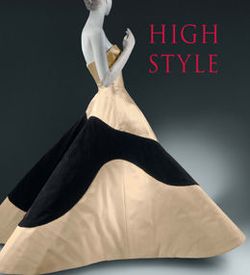Evening dress
Designer Paul Poiret French
Not on view
A rare example of Paul Poiret's early revolutionary designs loosely based on the upright, columnar, high-waisted styles worn in ancient Greece, this gown is an innovative melding of the avant-garde and the traditional. The tubular shape and graphic horizontal stripes are harbingers of the modern era, while the below-the-knee gathering of the overskirt suggests the "hobble skirt" that Poiret introduced in 1910 and was briefly the height of fashion. Decorative touches taken from traditional sources mollify the radical form. One of Poiret's signature decorative techniques was to use folkloric textiles and trims that he collected on his travels. Here the collar and cuffs are fashioned from a traditional French pleated linen bonnet, and brightly colored brocade ribbons that would have adorned a festive folk bonnet or costume encircle the raised waistline.
Requiring less restrictive undergarments and conforming more to the natural shape of the body, Poiret's designs of 1908–11 are regarded as pivotal in the transition from the rigidly corseted silhouettes of the Victorian and Edwardian eras to styles providing greater freedom and comfort in dress that would characterize twentieth-century fashion.
Due to rights restrictions, this image cannot be enlarged, viewed at full screen, or downloaded.
This artwork is meant to be viewed from right to left. Scroll left to view more.








